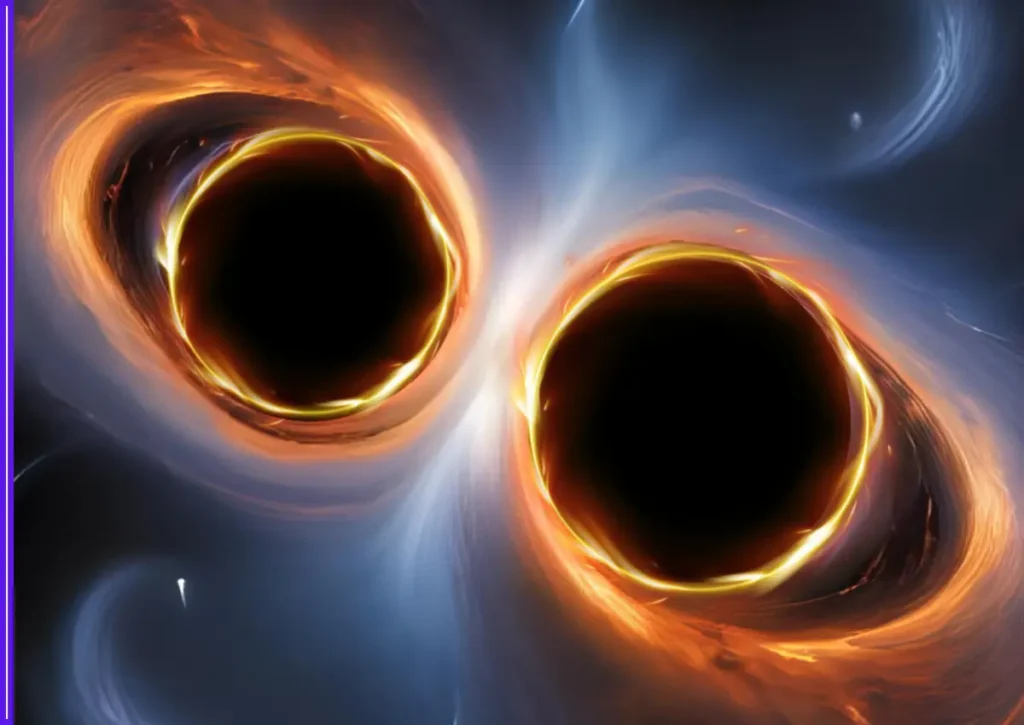In a record-breaking discovery, the international gravitational-wave observatories LIGO, Virgo, and KAGRA have detected the most massive black hole merger ever recorded. The cosmic collision, named GW231123, occurred on November 23, 2023, and was publicly revealed during the 2025 Gravitational Wave Conference held in Glasgow.

The event, invisible to conventional telescopes, was captured through gravitational waves—ripples in spacetime first predicted by Albert Einstein. According to the data released by the LIGO-Virgo-KAGRA (LVK) collaboration, the merged object now weighs approximately 225 times the mass of the Sun, making it the largest black hole ever observed through gravitational waves.
What makes GW231123 even more extraordinary is the nature of the two original black holes that combined. One had an estimated mass of about 100 solar masses, and the other roughly 140 solar masses. Both were unusually large and spinning near the speed of light, presenting major challenges to scientists attempting to analyze the signal.
Astrophysicists believe that such massive black holes don’t typically form from single collapsing stars. Instead, this merger suggests a more complex process called hierarchical black hole formation, where black holes merge multiple times over cosmic history, gradually growing larger. These so-called intermediate-mass black holes—between 100 and 1,000 solar masses—have remained elusive until now.
Dr. Mark Hannam, a physicist at Cardiff University and one of the leading researchers in the project, explained the significance: “This is the most massive black hole binary we’ve ever detected using gravitational waves. It challenges everything we thought we knew about the upper limit of black hole formation from stellar processes.”
The signal from GW231123 lasted only a fraction of a second—less than one full cycle of the gravitational wave—yet its power and precision stunned scientists. The black holes were spinning so fast that standard models didn’t fit the waveform, forcing researchers to develop new analytical tools to confirm the discovery.
The detection was part of the LVK collaboration’s fourth observing run (O4), which began in May 2023 and has so far yielded more than 200 candidate gravitational-wave signals. GW231123 stands out not just for its size but also for its scientific mystery. The original black holes appear to fall into the so-called “pair-instability mass gap”, a region where standard theory says black holes should not exist at all.
Researchers from the University of Birmingham, who helped confirm the signal, said the discovery points to the possibility of stellar nurseries or dense star clusters where multiple generations of black hole mergers could occur. Such environments might act as breeding grounds for gigantic black holes like the one formed in GW231123.
The final black hole, now 225 times the Sun’s mass, offers critical insight into how supermassive black holes at galactic centers might have grown over billions of years. The data also reinforces the need for more sensitive detectors in the next generation of observatories. With upgraded instruments and longer observational windows, future missions hope to pinpoint the locations of these mergers and possibly detect accompanying light signals.
This detection marks a turning point for gravitational-wave astronomy. It not only breaks previous mass records but also opens new questions about the structure and evolution of the universe. As more data from O4 is analyzed, the scientific community expects additional surprises.
Meanwhile, the LVK team plans to release full details and waveform data to the public through the Gravitational Wave Open Science Center later this year. These findings are expected to fuel months of further research, potentially reshaping existing models of stellar evolution and black hole growth.
The cosmos, once silent, now speaks in gravitational waves—and with GW231123, it has spoken louder than ever before.









